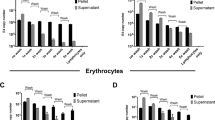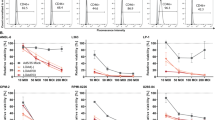Abstract
The literature has seen an incredible booming of publications related to the use of recombinant adenoviruses as therapeutic tools for lymphoproliferative disorders over the last decade. Several approaches of adenovirus-mediated gene expression have been used to transfect cell lines that are derived from lymphoid tumors and would have otherwise been refractory to other transfection methods. The identification of high-affinity receptor for human adenoviruses serotype 2 and 5, the coxsackie–adenovirus receptor (CAR), has raised the question about its relevance for the efficacy of recombinant adenovirus-mediated gene therapy. We review published studies that have analyzed the use of recombinant adenovirus vectors expressing cytotoxic genes for gene therapy in lymphomas, chronic lymphocytic leukemia and multiple myeloma. For simplicity, we group all these diseases under the term lymphoproliferative disorders. We analyze the use of recombinant adenovirus-mediated cytotoxicity by assessing the importance of the biochemical and intrinsic signaling pathways interacting with the products of the exogenous viral-mediated expression. Ultimately, we discuss studies that have been finalized to by-pass the limitations of the biodistribution of CAR by modifying or targeting adenovirus to other membrane proteins in cells derived from lymphoproliferative disorders.
This is a preview of subscription content, access via your institution
Access options
Subscribe to this journal
Receive 12 print issues and online access
$259.00 per year
only $21.58 per issue
Buy this article
- Purchase on Springer Link
- Instant access to full article PDF
Prices may be subject to local taxes which are calculated during checkout
Similar content being viewed by others
References
Dalla-Favera R, Gaidano G . Lymphomas. In: DeVita Jr VT, Hellman S, Rosenberg SA (eds). Cancer Principles and Practice of Oncology. Lippincott-Raven: Philadelphia, 2001; pp. 2215–2235.
Bergelson JM et al. Isolation of a common receptor for coxsackie B viruses and adenoviruses 2 and 5. Science 1997; 275: 1320–1323.
Tomko RP, Xu R, Philipson L . HCAR and MCAR: the human and mouse cellular receptors for subgroup C adenoviruses and group B coxsackieviruses. Proc Natl Acad Sci USA 1997; 94: 3352–3356.
Kipps TJ, Chu P, Wierda WG . Immunogenetic therapy for B-cell malignancies. Semin Oncol 2000; 27 (Suppl 12):: 104–109.
Gorschluter M, Ziske C, Glasmacher A, Schmidt-Wolf IGH . Current clinical and laboratory strategies to augment the efficacy of immnunotherapy in multiple myeloma. Clin Cancer Res 2001; 7: 2195–2204.
Danthinne X, Imperiale MJ . Production of first generation adenovirus vectors: a review. Gene Ther 2000; 7: 1707–1714.
Meeker TC et al. Adenoviral vectors efficiently target cell lines derived from selected lymphocytic malignancies including anaplastic large cell lymphoma and Hodgkin's disease. Clin Cancer Res 1997; 3: 357–364.
Teoh G et al. Adenovirus vector-based purging of multiple myeloma cells. Blood 1998; 92: 4591–4601.
Hollstein M, Sidransky D, Volgestein B, Harris CC . P53 mutations in human cancers. Science 1991; 253: 49–53.
Lowe SW, Ruley HE, Jacks T, Housman DE . P53-dependent apoptosis modulates the cytotoxicity of anticancer agents. Cell 1993; 74: 957–967.
Nielsen LL, Maneval DC . p53 tumor suppressor gene therapy for cancer. Cancer Gene Ther 1998; 5: 52–63.
Turturro F, Seth P, Link Jr CJ . In vitro adenoviral vector p53-mediated transduction and killing correlates with expression of coxsackie-adenovirus receptor and ανβ5 integrin in SUDHL-1 cells derived from anaplastic large cell lymphoma. Clin Cancer Res 2000; 6: 185–192.
Turturro F et al. Adenovirus-p53-mediated gene therapy of anaplastic large cell lymphoma with t(2;5) in a nude mouse model. Gene Ther 2000; 7: 930–933.
Buttgereit P et al. Effects of adenoviral wild-type p53 gene transfer in p53-mutated lymphoma. Cancer Gene Ther 2001; 8: 430–439.
Liu Q, Gazitt WS . Adenovirus-mediated delivery of p53 results in substantial apoptosis to myeloma cells and is not toxic to flow-sorted CD34+ hematopoietic progenitor cells and normal lymphocytes. Exp Hematol 2000; 28: 1354–1362.
Liu Q, El-Deiry WS, Gazitt Y . Additive effect of Apo2L/TRAIL and Adeno-p53 in the induction of apoptosis in myeloma cell lines. Exp Hematol 2001; 29: 962–970.
Craig C et al. A recombinant adenovirus expressing p27kip1 induces cell cycle arrest and loss of cyclin-Cdk activity in human breast cancer. Oncogene 1997; 14: 2283–2289.
Katayose D, Wresto R, Cowan KH, Seth P . Effects of a recombinant adenovirus expressing WAF1/Cip1 on cell growth, cell cycle, and apoptosis. Cell Growth Dif 1995; 6: 1207–1212.
Craig C et al. Effects of adenovirus-mediated p16INK4A expression on cell cycle arrest are determined by endogenous p16 and Rb status in human cancer cells. Oncogene 1998; 16: 265–272.
Turturro F et al. Biochemical differences between SUDHL-1 and KARPAS 299 cells derived from t(2;5)-positive anaplastic large cell lymphoma are responsible for the different sensitivity to the antiproliferative effect of p27Kip1. Oncogene 2001; 20: 4466–4475.
Turturro F et al. Comparison of the effects of recombinant adenovirus-mediated expression of wild-type p53 and p27Kip1 on cell cycle and apoptosis in SUDHL-1 cells derived from anaplastic large cell lymphoma. Leukemia 2001; 15: 1225–1231.
Turturro F, Arnold MD, Frist AY, Seth P . Effects of adenovirus-mediated expression of p27Kip1, p21Waf1 and p16INK4A in cell lines derived from t(2;5) anaplastic large cell lymphoma and Hodgkin's disease. Leuk Lymphoma 2002; 43: 1323–1328.
Ni H et al. Analysis of expression of nuclear factor κ B (NF-κB) in multiple myeloma: downregulation of NF-κB induces apoptosis. Br J Haematol 2001; 115: 279–286.
Izban KF et al. Characterization of NF-κB expression in Hodgkin's Disease: inhibition of constitutively expressed NF-κB results in spontaneous caspase-independent apoptosis in Hodgkin and Reed Sternberg cells. Mod Pathol 2001; 14: 297–310.
Braithwaite AW, Russell IA . Induction of cell death by adenoviruses. Apoptosis 2001; 6: 359–370.
Lucher LA . Abortive adenovirus infection and host range determinants. Curr Top Microbiol Immunol 1995; 199: 119–152.
Hall AR, Dix BR, O'Carroll SJ, Braithwaite AW . P53-dependent cell death/apoptosis is required for a productive adenovirus infection. Nat Med 1998; 4: 1068–1072.
Bischoff JR et al. An adenovirus mutant that replicates selectively in p53-deficient human tumor cells. Science 1996; 274: 373–376.
Heise C et al. ONYX-015, an E1B gene-attenuated adenovirus, causes tumor-specific cytolysis and antitumoral efficacy that can be augmented by standard chemotherapeutic agents. Nat Med 1997; 3: 639–645.
Medina DJ et al. Adenovirus-mediated cytotoxicity of chronic lymphocytic leukemia cells. Blood 1999; 94: 3499–3508.
Bewley MC et al. Structural analysis of the mechanism of adenovirus binding to its human cellular receptor, CAR. Science 1999; 286: 1579–1583.
Nemerow GR, Stewart PL . Role of alpha(v) integrins in adenovirus cell entry and gene delivery. Microbiol Mol Biol Rev 1999; 63: 725–734.
Seth P . Entry of adenovirus into cells. In Seth P (ed). Adenoviruses: Basic Biology to Gene Therapy. RG Landes Company: Austin, 1999, pp. 31–37.
Hong SS et al. Adenovirus type 5 fiber knob binds to MHC class I alpha2 domain at the surface of human epithelial and B lymphoblastoid cells. EMBO J 1997; 16: 2294–2306.
Davison E, Kirby I, Elliott T, Santis G . The human HLA-A *0201 allele, expressed in hamster cells, is not a high-affinity receptor for adenovirus type 5 fiber. J Virol 1999; 73: 4513–4517.
Roelvink PW et al. The coxsackievirus-adenovirus receptor protein can function as a cellular attachment protein for adenovirus serotypes from subgroups A, C, D, E, and F. J Virol 1998; 72: 7909–7915.
Leon RP et al. Adenoviral-mediated gene transfer in lymphocytes. Proc Natl Acad Sci USA 1998; 95: 13 159–13 164.
Wan YY et al. Transgenic expression of the coxsackie/adenovirus receptor enables adenoviral-mediated gene delivery in naïve T cells. Proc Natl Acad Sci USA 2000; 97: 13 784–13 789.
Schmidt MR, Piekos B, Cabatingan MS, Woodland RT . Expression of a human coxsackie/adenovirus receptor transgene permits adenovirus infection of primary lymphocytes. J Immunol 2000; 165: 4112–4119.
Tallone T et al. A mouse model for adenovirus gene delivery. Proc Natl Acad Sci USA 2001; 98: 7910–7915.
Einfeld DA et al. Reducing the native tropism of adenovirus vectors requires removal of both CAR and integrin interactions. J Virol 2001; 75: 11 284–11 291.
Honda T et al. The coxsackievirus–adenovirus receptor protein as a cell adhesion molecule in the developing mouse brain. Brain Res Mol Brain Res 2000; 77: 19–28.
Wattel E et al. Differential efficacy of adenoviral mediated gene transfer into cells from hematological cell lines and fresh hematological malignancies. Leukemia 1996; 10: 171–174.
Huang MR et al. Efficient adenovirus-mediated gene transduction of normal and leukemic hematopoietic cells. Gene Ther 1997; 4: 1093–1099.
Prince HM et al. Efficient adenovirus-mediated gene expression in malignant human plasma cells: relative lymphoid cell resistance. Exp Hematol 1998; 26: 27–36.
Wickham TJ . Targeting adenovirus. Gene Ther 2000; 7: 110–114.
Gonzales R et al. Transduction of bone marrow cells by the AdZ.F(pK7) modified adenovirus demonstrates preferential gene transfer in myeloma cells. Hum Gene Ther 1999; 10: 2709–2717.
Von Seggern DJ et al. Adenovirus vector pseudotyping in fiber-expressing cell lines: improved transduction of Epstein-Barr virus-transformed B cells. J Virol 2000; 74: 354–362.
Israel BF et al. Enhancement of adenovirus vector entry into CD70-positive B-cell lines by using a bispecific CD70-adenovirus fiber antibody. J Virol 2001; 75: 5215–5221.
Author information
Authors and Affiliations
Rights and permissions
About this article
Cite this article
Turturro, F. Recombinant adenovirus-mediated cytotoxic gene therapy of lymphoproliferative disorders: is CAR important for the vector to ride?. Gene Ther 10, 100–104 (2003). https://doi.org/10.1038/sj.gt.3301842
Received:
Accepted:
Published:
Issue Date:
DOI: https://doi.org/10.1038/sj.gt.3301842



